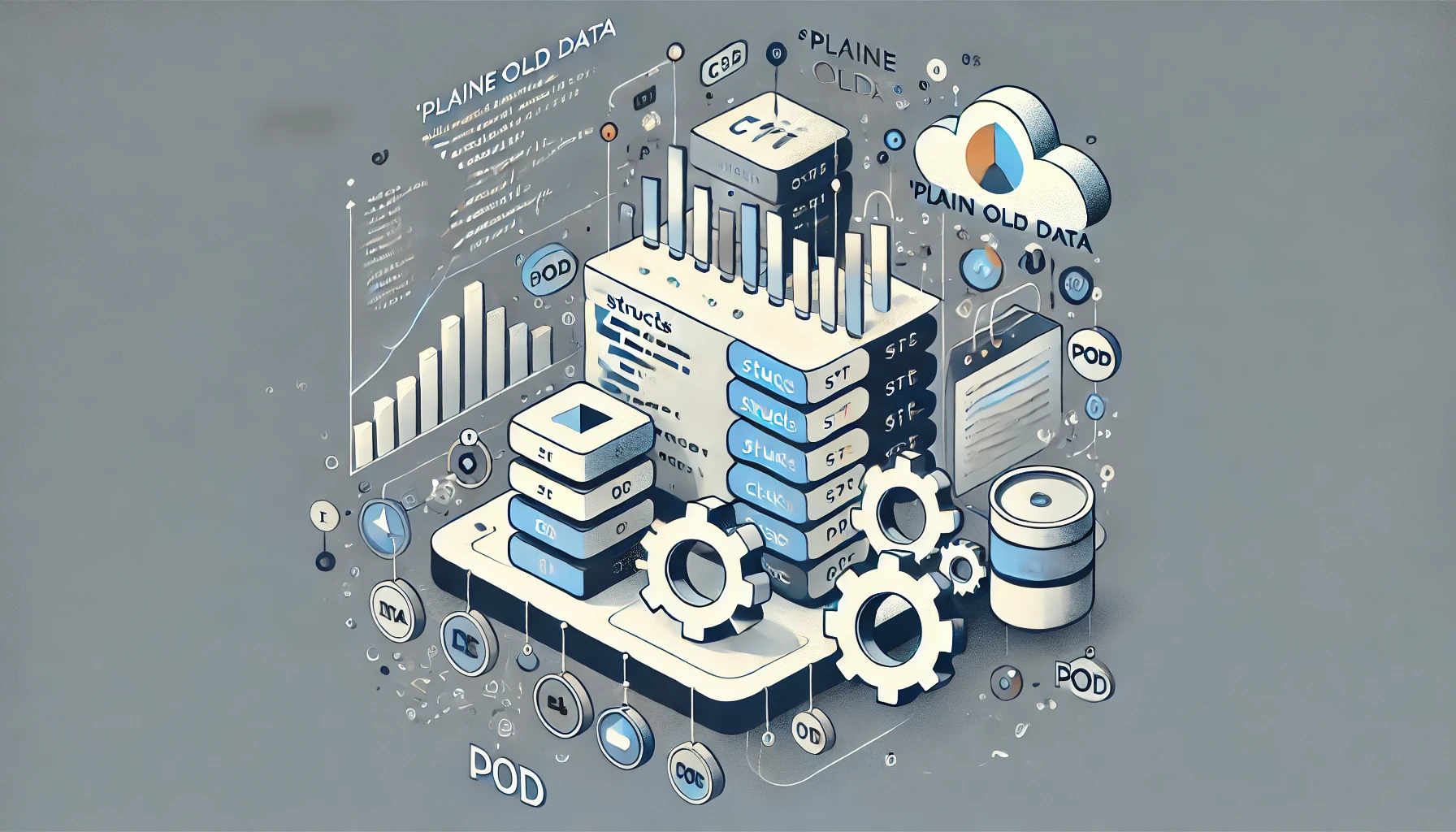Plain Old Data (POD) in C++: A Practical Guide

In C++, plain old data (POD) is a fundamental concept that provides a direct representation of data without complex object-oriented features. Understanding POD types and how to use them is essential for writing efficient, portable, and robust code. This article explores the concept of POD types in C++, showing how to define and use them and describing best practices for creating and managing such structures. This article is for developers who want to maximize the advantages of POD types in C++.
What exactly is a Plain Old Data (POD) type in C++?
In C++, a Plain Old Data (POD) type is a class or struct that is simple, does not have complex object-oriented features, and represents a collection of basic data types. Specifically, a POD type does not have a user-defined constructor, destructor, or copy assignment operator. It also does not have virtual functions, base classes or non-static data members of non-POD types. They are similar to C structures, and they can be directly copied and moved in memory.
Why are POD types important in C++?
POD types are crucial for several reasons. They enable better performance, as they do not have complex object mechanisms. Also, they are straightforward to serialize and deserialize, which helps with portability. POD types are also easy to initialize in a standard way, and often have interoperability with external libraries or languages that do not understand more complex C++ objects.
How do you define a POD type in C++?
POD types are defined as simple structs or classes that only contain members that are themselves POD types (or simple pointers to other POD types). They do not have a custom constructor or destructor, or other special methods that would modify the default memory behavior of the class. For instance, struct Point { int x; int y; }; is a POD type.
What are the characteristics of a POD type?
POD types have several characteristics: they have a trivial default constructor (or no constructor), a trivial copy constructor, a trivial copy assignment operator, and a trivial destructor. Additionally, they do not have virtual functions, virtual base classes, nor do they have non-static data members that are not of POD type.
How are POD types different from non-POD types in C++?
Non-POD types are complex C++ objects that have user-defined constructors, destructors, or special methods. They can also have virtual functions, base classes or member functions that change their behavior when they are instantiated. Non-POD types are often more complex, and they can introduce hidden behavior. Therefore, it is harder to predict the overall size or structure of complex non-POD classes or structures.
Can POD types contain pointers?
Yes, POD types can contain pointers to other POD types or to basic types, but these must be simple pointers to objects or basic datatypes. However, they cannot contain pointers to more complex C++ objects. Typically pointers to strings, or dynamically allocated memory should be avoided. Therefore, you must be careful when using pointers in POD structures to avoid issues, particularly memory issues.
Why is memory layout of POD types important?
The memory layout of POD types is predictable and consistent. This makes them easy to work with when copying data, serializing and deserializing data, or when working with external libraries that need a specific data layout. This consistency in memory layout helps avoid issues with memory alignment and size, and can be a great help when debugging and finding errors in your code.
How can POD types be used with external libraries?
Because the memory layout of POD types is known, you can easily use them in external libraries and APIs. For example, if you have a graphics library that has a certain data structure format, it is easy to use POD types for them because there is no hidden or unpredictable behavior.
What are the performance benefits of using POD types in C++?
POD types can offer better performance as they avoid the overhead of C++ object-oriented features. The lack of virtual functions, special constructors, destructors, and inheritance helps to minimize overhead. The direct memory access that they offer means you are not relying on hidden features and are working more directly with the computer's memory. This will speed up your applications and make them easier to debug.
Are POD types always the best option in C++?
While POD types offer great advantages, they are not always the best choice for all situations. When you need the power and flexibility of object-oriented techniques such as inheritance and polymorphism, using complex C++ classes is more appropriate. Therefore, using POD types is often ideal for basic data structures, whereas more complex objects are needed for more complex use cases.
In summary, understanding the fundamentals of POD types in C++ is essential for writing efficient, portable, and interoperable code. They provide a basic and easy to use data representation that is ideal for many tasks. Although not suitable for all situations, they provide a solid foundation for any C++ project.
Helpful Resources
- Cppreference: Trivial Type
- Isocpp: POD types
- GeeksforGeeks: Plain Old Data (POD) in C++
- LearnCpp: Classes vs Structs - Guide on classes and structs.
- Boost libraries - A collection of portable c++ libraries.